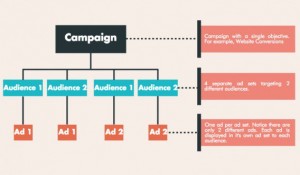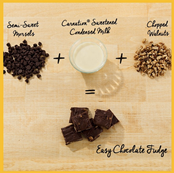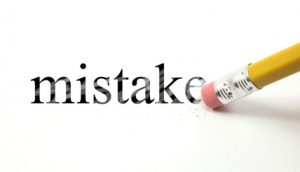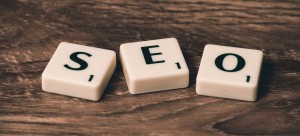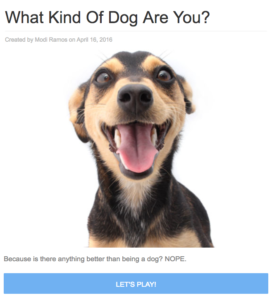What’s the first thing you do after stumbling upon an atrocious website? If you’re like me, you leave. No one wants to spend time on a complicated website with garish design and crummy UX.
A website or landing page is a highly visual medium. The brain processes visual information 60,000 times faster than text, so perfecting the design is crucial. You can have the most compelling, beautifully written copy in the world, but visitors won’t waste their time reading it if the page doesn’t “feel” right.
Your website or landing page is essentially the visual version of your brand’s message to the world. If you want visitors to convert, you have to design it right.
Luckily, websites and landing pages are 100% manipulatable. If your conversion rate leaves much to be desired, you can fix it. Keep these design techniques in mind, and you just might see an uptick in conversions.
1. Streamline Your Design
In short, less is more.
Your entire website needs to flow from one page to the next. This is especially important when it comes to landing page design. When your goal is to get visitors to convert, you have to make it easy for them to do so.
Hick’s Law states that the amount of time it takes for a person to make a decision is based on the number of choices available. The more choices available, the longer it takes to process. Instead of taking the time to assess the information presented, a visitor may decide to leave your landing page altogether.
Fewer choices = higher conversion.
Guide your visitors down the path to conversion by using only one CTA button and as few form fields as possible. Stick to just name and email address, if possible. The more information you ask for, the lower your conversion rate. Asking for a phone number can reduce conversions by as much as 5%.
2. Make Content Easy to Read
Visitors don’t read text thoroughly. Instead of reading word for word, we scan web content in an F-shaped pattern. Design your website and landing pages with that in mind.
The first two paragraphs should contain the most important information. Visitors are more likely to read the first paragraph than anything else on the page. Make information even more easy to digest, i.e. scannable, by using subheads, chunky text and bullet points with keyword-rich words.
3. Pick the Right Palette
Color can affect how visitors interpret and engage with your website. While there is no perfect color palette, understanding the psychology behind color can help you predict how visitors will respond. Psychologist Robert Plutchik’s famous color wheel specifies how different colors – even different shades of colors – evoke different emotions. Color triggers the central nervous system, giving you all the more reason to use color to your advantage.

In addition to evoking a gut reaction for visitors, color is also a critical component of branding. It increases brand recognition by up to 80%. Just look at Tiffany & Co. When you think of the brand, their ubiquitous (and trademarked) shade of robin’s egg blue immediately comes to mind, as it’s visible on their jewelry boxes, shopping bags, advertising and website.

4. Choose Fonts Wisely
In the grand scheme of website design, font is one thing that is often overlooked. But, like color, the fonts you use also have a psychological effect on visitors. Too many fonts, and they’ll all be competing for attention. Too few, and your website will look rather dull.
You should certainly use more than one font but proceed with caution. Fonts should complement one another, not clash. Your entire website should feel cohesive and flow from one page to the next.

The New Yorker website is a great example, as it looks a lot like the print version of the magazine. The fonts work together and, most importantly, are legible. If you take anything away from this article, let it be this: If there is text that you want your visitors to read, you have to make it easy to read.
5. Play With Symmetry
Whether you realize it or not, you like symmetry. Human beings prefer it to disarray. It’s a natural instinct that you should leverage in your webpage design.
Information is easier to digest when it is presented in an orderly, symmetrical manner. Asymmetry, however, makes it difficult to focus – not great for important body copy on your “Products & Services” page, but fantastic for drawing attention to things like CTA buttons.
6. Don’t Forget About Quality Imagery
A picture speaks a thousand words. Sure, a website relies heavily on well-written copy, but imagery is also extremely important. A beautifully designed website with killer imagery doesn’t necessarily lead to conversions, but it can certainly tip the scales in the right direction.
No one wants to spend hours poking around a hideous website, so if you want a visitor to stay on your page and eventually convert, you have to make your website a pleasant place to be. Remember what I mentioned earlier about color triggering the central nervous system? The same goes for imagery.

Great imagery evokes a gut reaction. Joss & Main’s website is a great example. I’m already a self-admitted home goods enthusiast, but their next-level imagery makes me want to keep scrolling and scrolling. That closet is amazing. And #DeskGoals, am I right?
7. Optimize Your CTA Button
When there is a specific action you want a visitor to take, you have to make it easy for them to take that action. Your CTA button needs to be foolproof. There are a few tweaks you can make to create a CTA button that converts.
A CTA button needs to look like a clickable button. Think: rectangular in shape with distinct borders, preferably on a white background. Use an attention-grabbing color (anything not neutral) that complements the color scheme of the page. There is no single color that will lead to a 100% conversion rate, so play around with it. A/B testing comes in handy here.
At IMA, we were tasked with creating a landing page for a client whose colors are red and blue. We designed the landing page accordingly, but the conversion rate was pretty lackluster after several days. Upon further examination, we realized the CTA button was red, which, for many people, is a stop color. After changing the color to blue, we noticed a boost in conversions. Of course, we can’t 100% certain the color change is what caused the boost, but it’s still interesting food for thought.
A good CTA button also needs to contain short, to-the-point CTA language. Forget boring words like “register,” “download” or “submit.” A HubSpot study found that CTA buttons containing the word “submit” have a 14% conversion rate, while buttons without “submit” have a 17% conversion rate. Action words like “try,” “give,” “get,” or “use” are more likely to convert. You can also use words like “today” or “now” to create a sense of urgency.
One more thing: don’t go crazy with CTA buttons. Instead of littering your website or landing page with buttons, use one. Remember: reducing options can increase conversions.
Digital & Social Articles on Business 2 Community(94)

